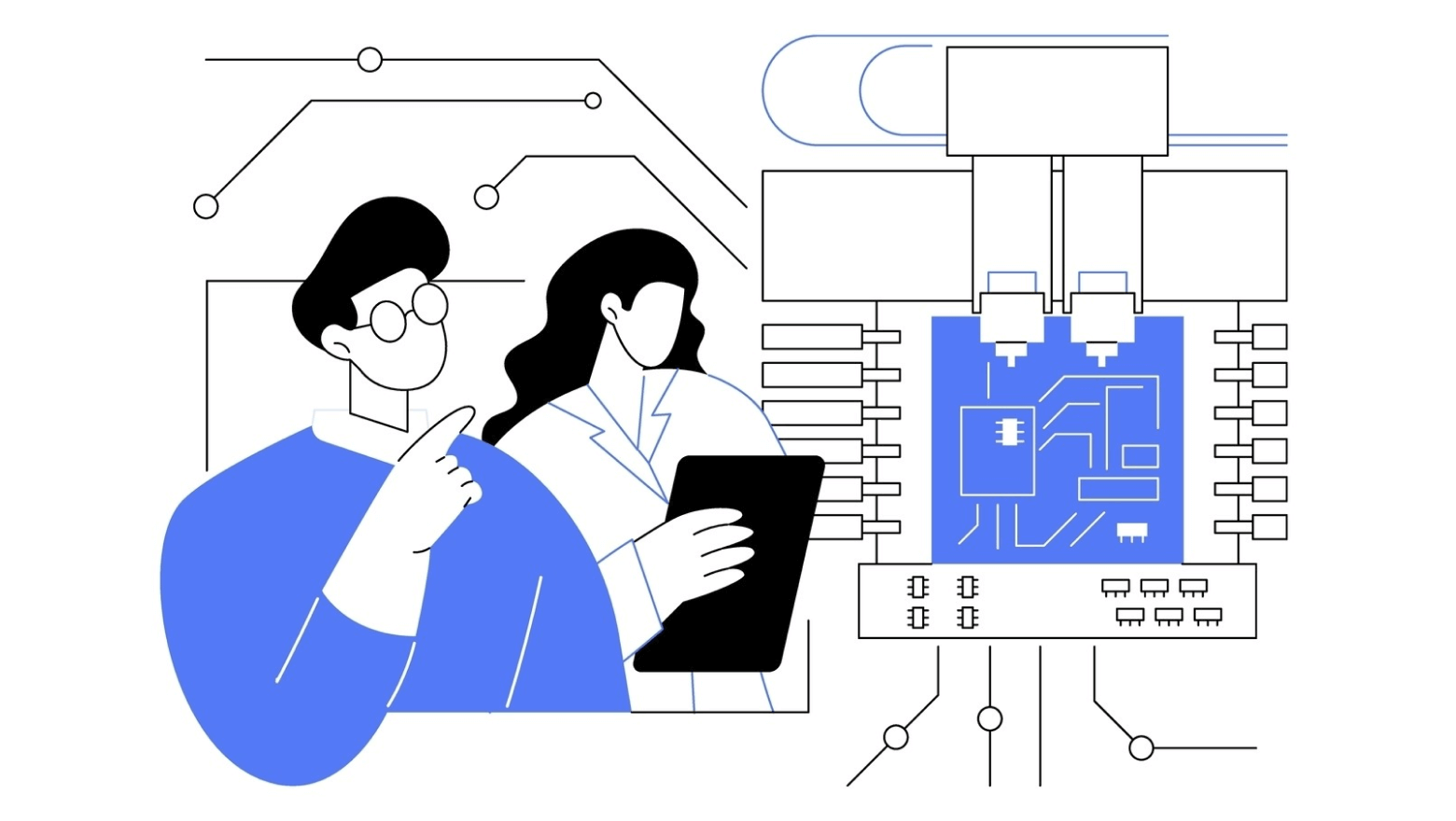Machine speech recognition, driven by artificial intelligence and machine learning, allows computer programs to understand and process audio signals. This technology is closely linked to transcription, the process of converting spoken language into written text, resulting in a textual transcript.
As the manufacturing sector embraces this advanced technology, it frequently chooses on-premise machine speech recognition solutions for ensuring data security. On-premise solutions allow companies to keep sensitive information within their controlled environments, reducing the risk of external breaches.
These solutions also enhance operational efficiency by enabling faster data access and processing, without the latency issues associated with cloud-based systems. Additionally, on-premise systems offer greater customization and integration with existing manufacturing processes, leading to improved overall productivity and system reliability.

How does the speech recognition process work?
The process of machine speech recognition involves several stages:
1. a microphone or another audio recording device captures the audio signal;
2. the audio file is segmented into fragments to facilitate processing, with noise removal and quality enhancement applied to prepare it for further transformation;
3. decoding algorithms and machine learning neural networks interpret the resulting text, taking into account context and language structure;
4. finally, the text is presented as a document, displayed on the device screen, or executed as a command.
Why is speech recognition an important tool for manufacturing?
The global manufacturing industry generates trillions of dollars each year and is utilised extensively across all continents. However, significant challenges persist, including language barriers between business partners, customers and staff. Addressing this issue is important for the industry's continued growth.
Speech recognition technology has become an essential tool in the manufacturing sector, offering numerous advantages that enhance operational efficiency, safety, and productivity.
Nowadays, any large manufacturing production involves people from different countries and uses documents in many languages. Marketing, sales, warranty services are offered and provided in dozens of languages and dialects.
So it is not surprising that the machine speech recognition market is growing fast. Below just a few benefits of machine speech recognition for any manufacturer are noted.
- Improving multilingual interaction: Speech recognition technology can instantly understand, identify and translate speech spoken in dozens of languages, allowing suppliers, clients, dealers and manufacturing company workers to communicate more effectively regardless of language barriers. This improves the overall client experience by making it easier for non-native speakers to ask questions and receive information in their preferred language. Multilingual support helps attract a more diverse range of international customers and partners.
- Streamlining communication. Speech recognition can be used for real-time transcription during meetings enhancing clarity and engagement in discussions.
- Automation in production and transportation. Voice-controlled devices and vehicles can be used in factories and logistical centres to make various processes more effective and swift.
- Automation of customer service: Technical support services by utilising speech recognition automated systems can handle any number of routine queries simultaneously, freeing up staff to focus on more complex interactions. This technology allows for faster resolution of issues and more efficient handling of requests, leading to higher customer satisfaction.
- Optimising operations: Speech recognition can automate various administrative tasks, such as making orders for goods and processing payments. This reduces the workload on staff and minimises human error, leading to more efficient and accurate operations. Automation through speech recognition ensures that repetitive tasks are handled swiftly, improving overall operational efficiency.
- Creating instructions and manuals. Utilising machine speech recognition streamlines the documentation process by automatically transcribing spoken content into accurate written text. This technology enhances efficiency by reducing the time and effort needed for manual transcription of spoken or video technical support, ensuring quicker updates and dissemination of instructional materials. Additionally, it improves accessibility, making it easier to produce multilingual manuals and subtitles for video instructions, thereby reaching a broader audience.
Key benefits of Lingvanex On-premise Speech Recognition Software for manufacturing
On-premise speech recognition software is created by one company but installed and operated on the servers of another organisation.
The solution by Lingvanex ensures comprehensive speech recognition services across all devices connected to the server, including tablets, Windows and Mac OS desktop computers, and Android and iPhone mobile phones.
- Enhanced data security. This approach is highly secure, as it eliminates the need to transmit and process audio recordings on external servers, thereby safeguarding the information. The importance of security cannot be overstated, especially in contexts involving private financial information and technical know-hows.
- Unlimited transcription capabilities. Besides ensuring complete security, Lingvanex provides a fixed monthly price with no limits on the volume of audio processed. For 400 euros per month, users can transcribe anywhere from a dozen to thousands hours of audio.
- Real-time transcription. The software supports transcription of both real-time speech and pre-recorded files in formats such as FLV, AVI, MP4, MOV, MKV, WAV, WMA, MP3, OGG, and M4A.
- Multilingual support. Lingvanex On-premise Speech Recognition Software recognises and transcribes speech in more than 90 languages. All language models receive regular updates.
- Improved training and onboarding. Lingvanex offers full technical support and training for customer’s staff.
- Seamless integration. Lingvanex On-Premise Speech Recognition Software can be seamlessly integrated with On-Premise Machine Translation Software. This integration allows for real-time or post facto translation of the recognized text into 109 languages, with no limits on the amount of translation.
The global market for speech recognition technology is growing rapidly, driven by increasing adoption in various industries, including manufacturing.
Consumer buying behaviour is evolving in both developed and developing nations, with a notable shift toward online shopping. Customers can now browse manufacturing products such as cars or computers, inquire about prices and features, and receive personalised recommendations from the comfort of their homes.
Analysts predict significant growth in the sector of speech recognition, with speech recognition becoming a standard feature in many services related to manufacturing.
Manufacturing industry is already reaping substantial benefits from advancements in AI and machine learning, particularly in speech recognition. These technologies will foster innovation, elevate customer experiences, and unlock new growth and differentiation opportunities.




